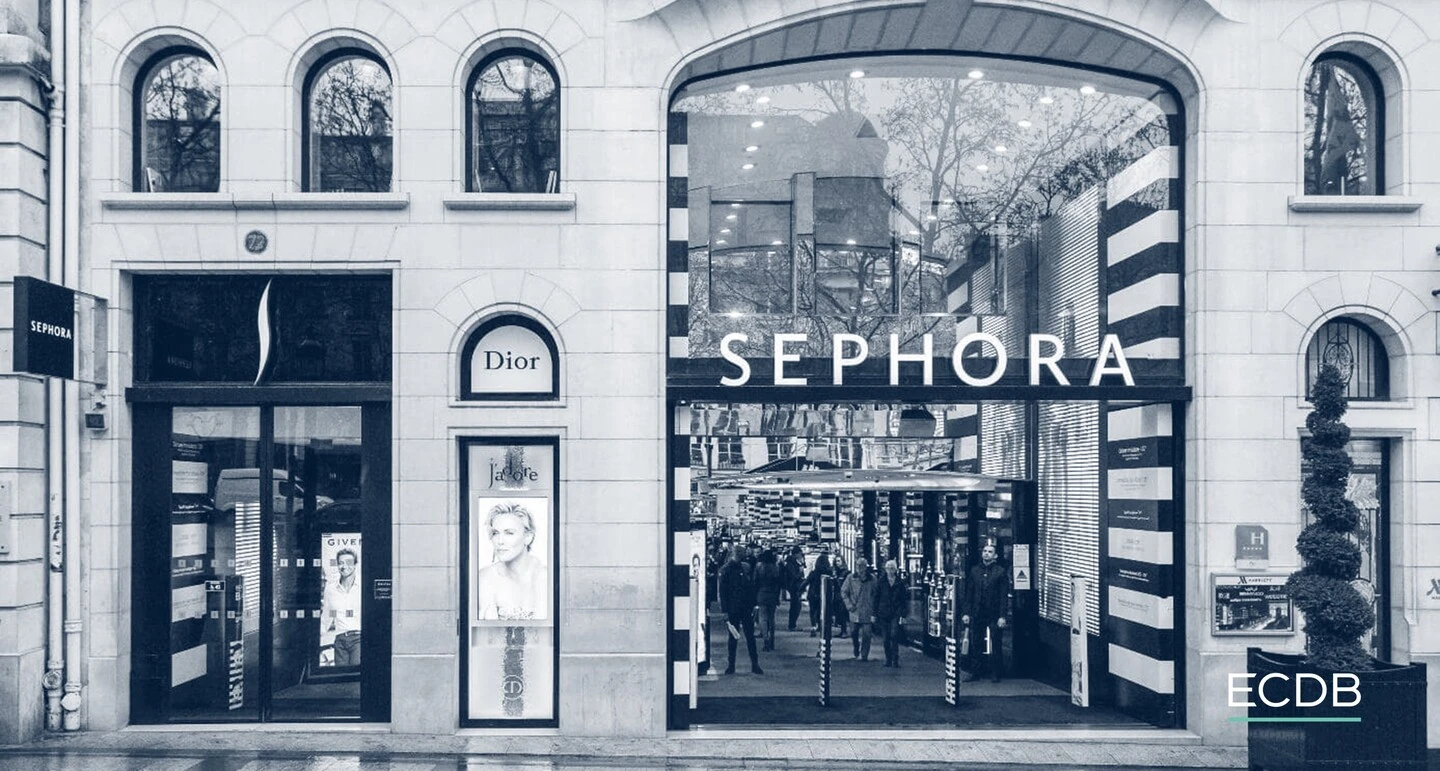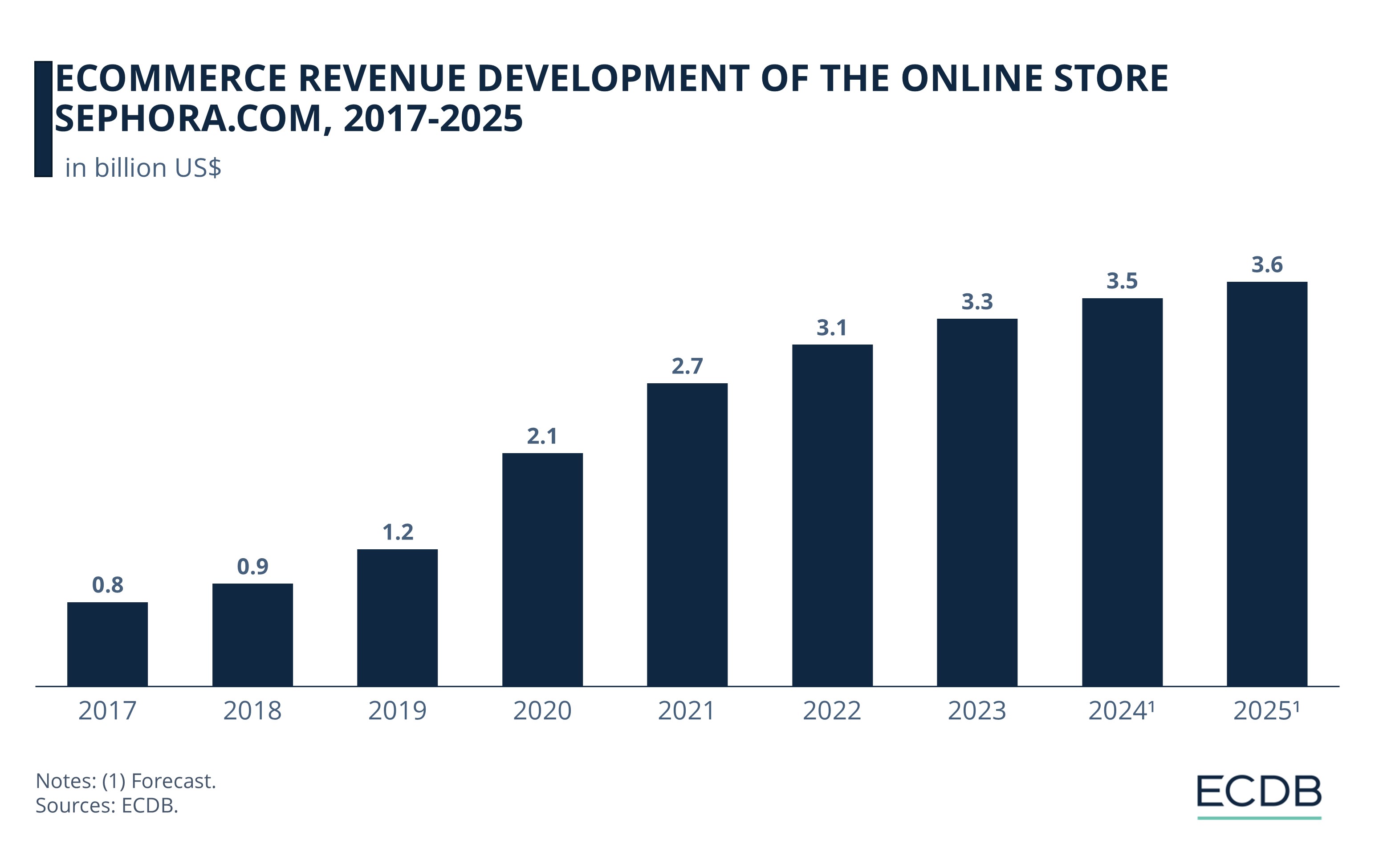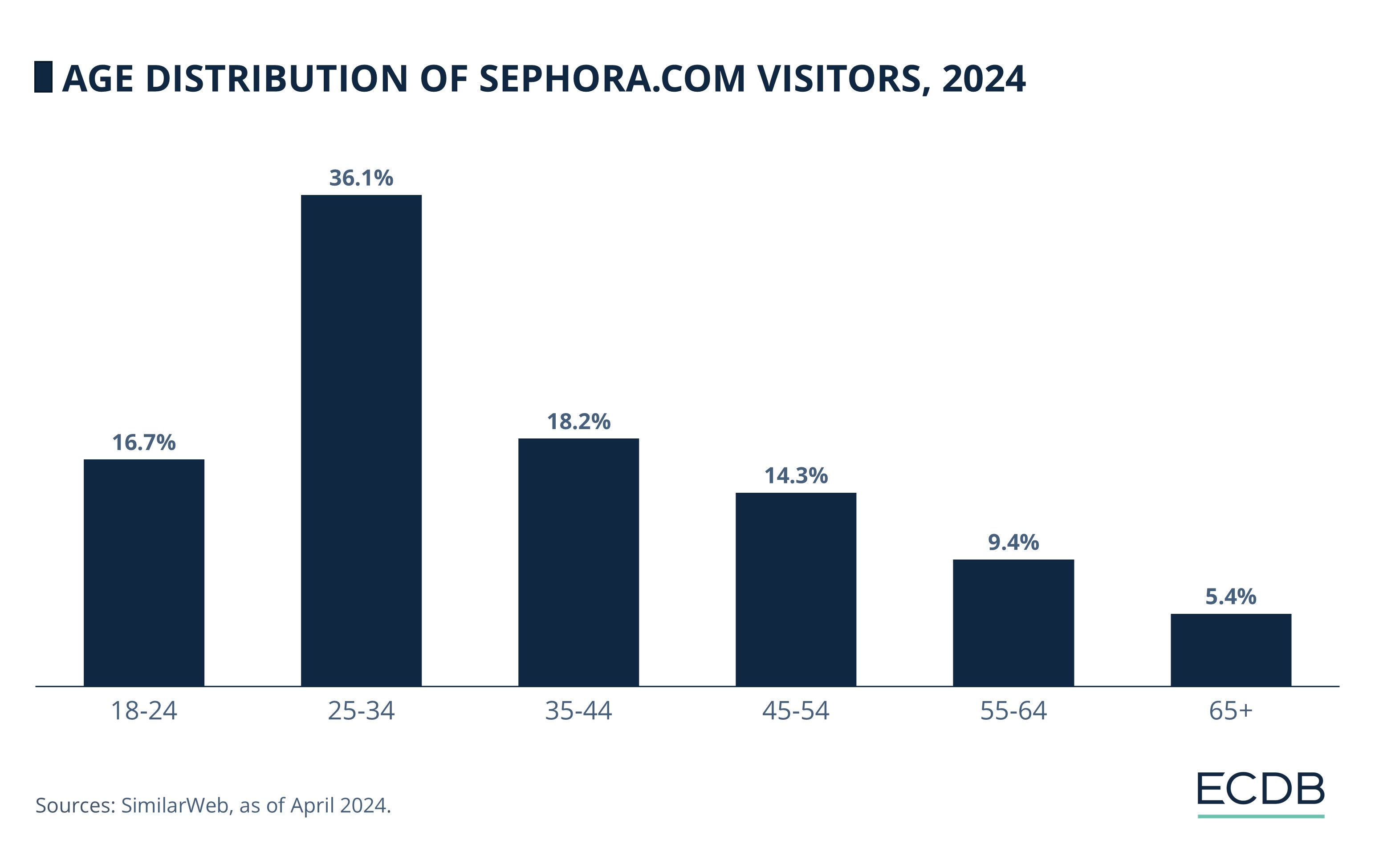eCommerce: Sephora
Sephora Business Model: The Online Beauty Leader and Its Succes
When it comes to makeup and skincare, Sephora and its online stores are the go-to place for many shoppers, many of them young and female. Especially in the world of eCommerce, the beauty brand is a force to be reckoned with – but what is behind its success?
Article by Antonia Tönnies | September 26, 2024Download
Coming soon
Share

Sephora Business Model: Key Insights
Sephora.com’s Online Presence: The sephora.com domain accounts for approximately 75% of the total net sales generated by Sephora's online stores, leading with US$3.3 billion in revenue in 2023.
Diverse Product Range: Sephora offers a wide array of personal care products, including makeup, skin care, fragrance, and hair care from both its own brands and partners like Dior and Fenty Beauty.
Innovative Business Strategies: Sephora uses augmented reality and social media to create a better online shopping experience and engage with younger generations.
Strong Offline Roots: Despite its eCommerce success, Sephora's in-store experiences, including personalized services and product trials, remain a core part of its brand identity.
In 2023, the United Kingdom domain, sephora.co.uk, was the 4th fastest growing eCommerce store in the world with an annual growth rate of 556%. Even after more than 50 years in business and 20 years in the eCommerce industry, beauty brand Sephora continues to thrive with its distinctive business model that combines offline and online retailing.
But how has it maintained its edge over decades and countless competitors? How does Sephora work? Here are the secrets behind Sephora's enduring success.
Sephora Business Model: The Leading Beauty eCommerce Brand
Founded in the 1970s, Sephora is one of the oldest and most successful beauty companies in the world. It all began with Dominique Mandonnaud and the original Shop 8, founded in 1969 in the French city Limoges, followed by Sephora's first self-service store in 1979. Nearly 20 years later, the French company joined the luxury group LVMH Moët Hennessy – Louis Vuitton SE as one of its Maisons.
In the past as in the present, the company concentrates on products of the Personal Care segment. These include makeup, skin care, fragrance and hair care products from Sephora's own brands as well as other brands such as Dior, Fenty Beauty and Laneige.
In 1999, the beauty giant launched its first website, sephora.com, in the United States. Over the years, new online stores have been opened, such as the Chinese online store sephora.cn, and the Mexican one sephora.com.mx.
Top Online Stores of Beauty Company Sephora
Today, more than 25 different domains worldwide belong to the beauty retailer, which generated total net sales of US$4.4 billion in 2023. Yet one domain makes up a crucial part of the success:

With net sales of US$3.3 billion in 2023, the sephora.com domain generates approximately 75% of Sephora's total net sales derived from all its online stores.
In second place comes the French online store sephora.fr, with eCommerce revenues of US$298.4 million in 2023 – barely 9% of the U.S. domain.
The Australian domain sephora.com.au and the Italian domain sephora.it follow a little closer behind, both with revenues of US$111.7 million respectively in 2023.
In fifth place appears the Spanish online store sephora.es, with a net revenue of US$60.9 million for the last year.
Since the number one domain is a crucial part of Sephora's online success, let's find out more about sephora.com and its latest developments.
Sephora’s Most Success Online Store: Sephora.com
As the beauty company's largest online store, sephora.com generated most of its 2023 revenue in the United States (84.5%), followed by Canada with 13.2%. Next are the United Kingdom (0.9%) and Germany (0.5%). Especially in the last few years, eCommerce net sales increased sharply, while it is currently slowing down:

In 2018, revenue amounted to US$920 million, an increase of 21.8% compared to the US$755 million in 2017.
With the onset of the global pandemic, sephora.com's revenue began to accelerate. The online store reached its highest growth in 2020, with net sales of US$2.1 billion – an annual increase of 70%.
After that, growth slowed down to 30% in 2021 with eCommerce net sales of US$2.7 billion, until it reached US$3.3 billion in sales last year.
ECDB analysts expect the online business to continue growing, the online business is expected to continue growing, albeit at a slower pace.
Who Shops at Sephora?
Since the U.S. domain generates the most revenue, it is logical to conclude that a large portion of Sephora's customers live in the United States, but who exactly shops at sephora.com? According to Statista, 80% of the online store's visitors are female, while one age group in particular likes to browse the site:

More than a third (36.1%) of sephora.com visitors are between the ages of 25 and 34.
The second-largest age group is between the ages of 35 and 44 (18.2%), closely followed by those between 18 and 24 (16.7%) and those between 45 and 54 (14.3%).
Visitors aged between 55 and 64 (9.4%) and those aged 65 and over (5.4%) are less common, which may be due to a lower affinity for online shopping compared to younger generations.
As a result, the majority of shoppers are young and female, belonging to the GenZ and Millennial generations. One reason for this could be recent business strategies.
The Secrets Behind Sephora’s Success
The company says of itself: "Sephora is a beauty wonderland where everyone is free to touch and try, where there is always a surprise, entertainment and fun". This concept was unique in the early days of the beauty company and still is the reason for its continued success.
In addition, the heart of the beauty brand consists of its offline shops, which offer customers a special experience, including personalized service and product discovery. All of this contributed to Sephora's eCommerce success when it went online more than 20 years ago. But there is more to that success.
Sephora’s Virtual Try-On Technology with Augmented Reality
How to test products while shopping online? Augmented reality (AR) makes it possible. To provide a similar "try before you buy" experience as in-store, Sephora has developed a digital tool that allows customers to try products from the store's eye, lip and cheek ranges.
In addition, Sephora developed another AR tool to identify the perfect shade, as well as the Smart Skin Scan, a tool to create a skincare routine tailored to the customer's skin. These features make the online shopping experience even more convenient and ensure that the products purchased match the customer's individual requirements.
For your information: We regularly update our rankings with the latest data from our models, providing valuable insights to help improve your company. Which stores and companies are leading eCommerce? Which categories are driving bestsellers and high sales? Find out for yourself on our rankings for companies, stores, and marketplaces. Stay a step ahead of the market with ECDB.
Social Media Strategy of Sephora
Behind Sephora's 2024 success story lies a well-executed social media strategy. This includes a select group of influencers, also known as the Sephora Squad, who promote Sephora products on social media channels such as Instagram and TikTok.

With this business strategy, the beauty retailer has become the fourth most talked about brand on the social media platform TikTok, with 15,600 influencers mentioning the brand in 2023. In doing so, Sephora was able to keep up with the times and make the transition from offline to a combination of brick-and-mortar and online shopping. In this way, Sephora has managed to capture the attention of the youngest generation, Gen Alpha.
Sephora Business Model: Closing Thoughts
Sephora has a long history, but it hasn't stopped moving forward. The brand has managed to bring its unique business model to the digital world while maintaining the offline part of the business at its core.
The brand's adoption of modern business strategies, such as AR and social media strategies, has also contributed to its success and can be seen in its customer base, where Sephora is particularly popular with GenZ and Gen Alpha, as well as Millennials. Despite its success and leading position as a beauty brand in eCommerce, Sephora cannot rest on its laurels – the competition never sleeps.
Sources: ECDB, secondary sources in the referenced articles.

Click here for
more relevant insights from
our partner Mastercard.
Related insights
Deep Dive
DM vs. Rossmann 2024: Which Online Drugstore Comes Out on Top
DM vs. Rossmann 2024: Which Online Drugstore Comes Out on Top
Deep Dive
Walmart Introduces Prescription Deliveries, Outpacing Drugstores CVS and Walgreens
Walmart Introduces Prescription Deliveries, Outpacing Drugstores CVS and Walgreens
Deep Dive
Largest Product Categories in German eCommerce: Fashion Tops the List
Largest Product Categories in German eCommerce: Fashion Tops the List
Deep Dive
eCommerce in the United States: Best Product Categories
eCommerce in the United States: Best Product Categories
Deep Dive
Mexican Online Pharmacy Market: The Top 5 Stores
Mexican Online Pharmacy Market: The Top 5 Stores
Back to main topics